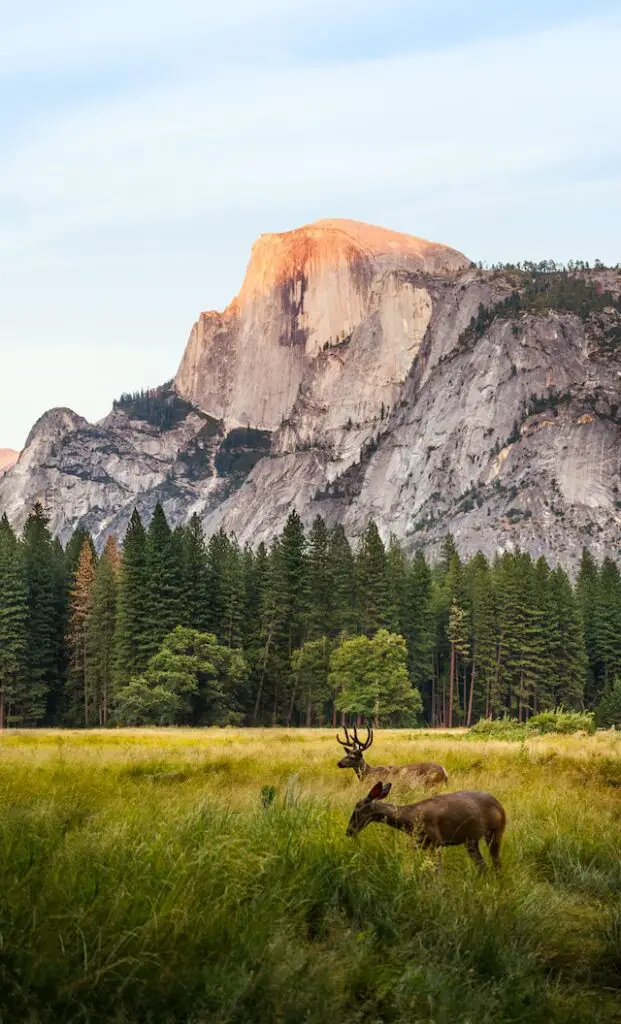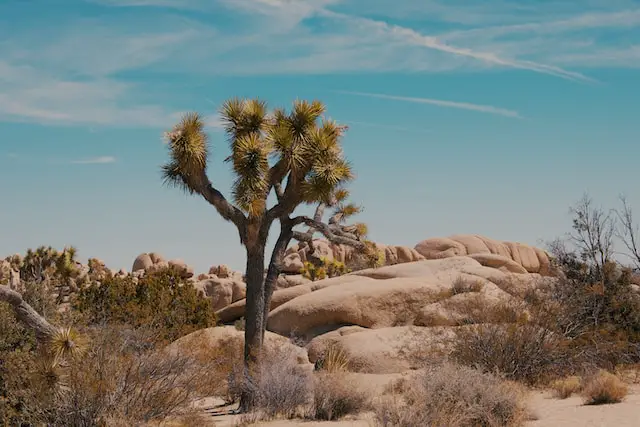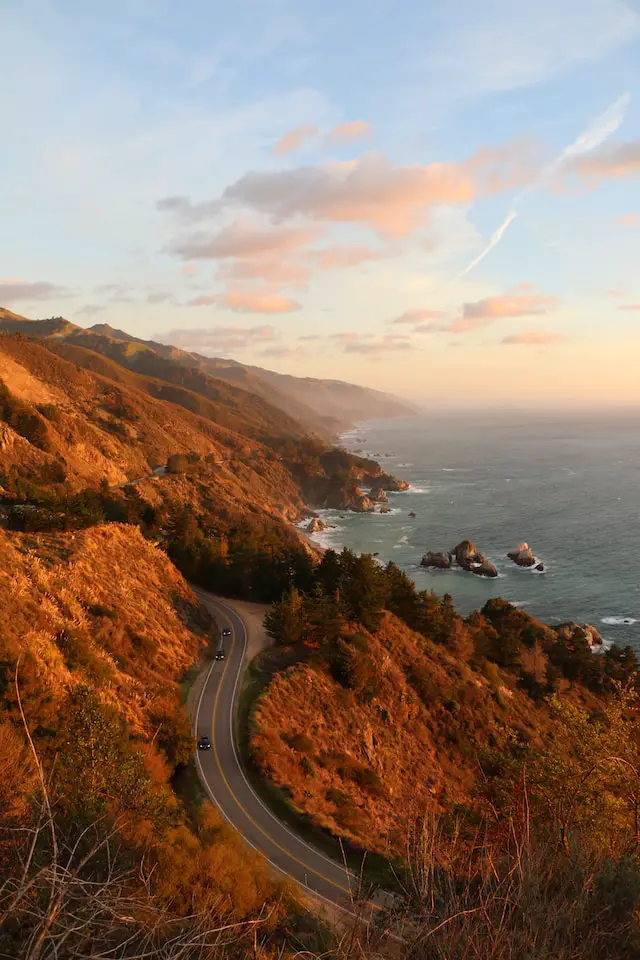Winter camping in Yosemite can be a breathtaking experience for those who love the great outdoors. The cold and snow can add a magical touch to the stunning natural scenery, making it the perfect time to go camping. However, winter camping presents its own unique challenges, including colder temperatures, snow, and shorter daylight hours. But not to worry! With the right gear and preparation, you can have an unforgettable winter camping trip in Yosemite National Park.
Key Takeaways:
- Winter camping in Yosemite can be a magical experience for outdoor enthusiasts.
- The cold and snow can add a unique touch to the natural scenery, making it the perfect time to go camping.
- Winter camping presents its own challenges, including colder temperatures, snow, and shorter daylight hours.
- With the right gear and preparation, you can have a safe and enjoyable winter camping trip in Yosemite.
- Some of the best things about Yosemite winter camping include breathtaking locations, outdoor activities, and the chance to capture stunning winter landscape photographs.
Essential Gear for Yosemite Winter Camping
Yosemite winter camping requires essential gear to stay safe and comfortable during the trip. Here are some items you should pack for a successful winter camping experience:
Sleeping Gear
A sleeping bag suitable for freezing temperatures is crucial for staying warm at night. Ensure that the sleeping bag has a temperature rating of 0°F or below. It’s also important to have a sleeping pad that insulates from the cold ground to prevent heat loss.

Tent
A four-season tent is necessary for camping during winter in Yosemite National Park. Four-season tents are designed to withstand heavy snow, strong winds, and protect campers from the cold. The tent should have a sturdy frame, a snow skirt to prevent snow from blowing through the bottom, and good ventilation to prevent condensation inside.
Clothing
The right clothing is vital for staying warm when camping during winter. Dress in layers to trap warmth. Start with a base layer of moisture-wicking fabric, add a warm mid-layer, and finish with a waterproof outer layer. Insulated gloves, a warm hat, and a scarf help to keep extremities warm. Bring extra socks, as keeping feet dry and warm is essential in cold weather.
Cooking Gear
A portable stove and fuel are necessary for cooking during Yosemite winter camping. Backpacking stoves are lightweight, compact, and easy to carry. Bring a pot suitable for cooking and melting snow for drinking water. An insulated mug and a spoon are additional items that make the camping experience enjoyable.
Lighting
Winter nights are long, and natural light is limited. Campers need a reliable source of light for cooking, reading, and navigation. A headlamp or flashlight with extra batteries is a must-have.
- Sleeping Bag rated for 0°F
- Sleeping Pad
- Four-Season Tent
- Moisture-Wicking Base Layer
- Warm Mid-Layer
- Waterproof Outer Layer
- Insulated Gloves, Hat, and Scarf
- Portable Stove and Fuel
- Cooking Pot
- Insulated Mug and Spoon
- Headlamp or Flashlight with Extra Batteries
Ensure all items are checked for functionality before heading out to Yosemite National Park during the winter season. Proper gear and equipment are crucial for a comfortable and safe camping experience.
Choosing the Right Tent for Yosemite Winter Camping
Choosing the right tent is crucial for ensuring a comfortable and safe winter camping experience in Yosemite National Park. There are several factors to consider when selecting the best one for your needs.
Types of Tents
Three-season tents are the most commonly used tents in Yosemite. They are lightweight and suitable for camping in spring, summer, and fall. However, they may not provide enough insulation for winter camping in Yosemite.
A four-season tent, also known as a mountaineering tent, is a better option for winter camping in Yosemite. These tents are designed to withstand harsh winter weather conditions. They are typically heavier and come with additional features such as stronger poles and reinforced walls to withstand high winds and heavy snow loads.
Size and Capacity
When selecting a tent, you should consider the number of people who will be camping with you. A tent’s size and capacity are essential factors to consider, as you want to ensure there is enough space to store your gear and equipment. Additionally, having a larger tent allows for more comfort during extended periods of time spent indoors due to inclement weather.
Additional Features to Consider
Other features to consider when selecting a tent include the material, insulation, ease of setup, and the number of entrances and vestibules. The material should be strong enough to withstand heavy snow loads and high winds. The insulation should keep you warm during winter camping in Yosemite. A tent with multiple entrances and vestibules can help with ventilation and storage of gear.

By considering the various factors involved in selecting the right tent for winter camping in Yosemite, you can ensure a comfortable, safe, and enjoyable experience in the wilderness.
Staying Warm: Clothing and Layering Tips
Staying warm is crucial when camping in Yosemite during winter. Without proper clothing and layering techniques, the cold weather can quickly become unbearable. Here are some essential tips for staying warm while camping in Yosemite during winter:
Choose the Right Clothing
Opt for moisture-wicking base layers to keep sweat away from your skin. Fleece or down jackets are excellent mid-layers that will provide insulation without adding bulk. Top it off with a waterproof and windproof shell jacket to keep out the elements. Don’t forget to wear thermal underwear and warm socks to keep your extremities warm.
Layer Effectively
Layering is critical to staying warm during winter camping in Yosemite. The three layers include base, mid, and outer. Wear layers that can be easily removed and added as your body temperature changes. Remove or add a layer whenever you start to feel too warm or cold, respectively.
Remember that the layer closest to your skin should be moisture-wicking and breathable, the mid-layer should provide insulation, and the outer layer should be windproof and waterproof.
Protect Your Head, Hands, and Feet
Most body heat escapes through the head. Therefore, it is crucial to wear a warm hat or beanie to keep your head warm. Gloves or mittens are also essential to protect your hands. Wool or synthetic materials are best as they are moisture-wicking and provide insulation even when wet.
Wear waterproof and insulated boots to keep your feet warm and dry. Consider wearing moisture-wicking socks to keep your feet dry and prevent blisters.
By following these clothing and layering tips, you can stay warm and comfortable during your Yosemite winter camping trip.
Safety Measures for Yosemite Winter Camping
When camping in Yosemite during the winter season, it is important to take necessary safety measures and precautions to ensure your trip is enjoyable and safe. The following tips can help you prepare for any unexpected situations during your Yosemite winter camping adventure.
1. Check the Weather
Before embarking on your Yosemite winter camping trip, make sure to check the weather forecast. Weather conditions can change rapidly in the mountains, and it’s crucial to be aware of any potential hazards such as snowstorms or avalanches.
2. Bring Adequate Gear
Proper clothing and gear are essential for winter camping in Yosemite. Pack warm layers, waterproof boots, a quality sleeping bag, and a tent suitable for cold weather. It’s also a good idea to bring a first aid kit, a map, and a compass or GPS device.
3. Stay Hydrated and Nourished
Staying hydrated and well-fed is crucial during a winter camping trip. Make sure to bring enough water and high-energy snacks. It’s also important to be mindful of the food you bring and store it properly to prevent attracting wildlife.
4. Follow Wildlife Etiquette
Yosemite is home to many wild animals, including bears, coyotes, and mountain lions. It’s essential to follow proper wildlife etiquette to prevent any dangerous encounters. Keep food and scented items stored properly, and never approach or feed wildlife.
5. Know Your Limits and Abilities
Although winter camping in Yosemite can be a fantastic adventure, it’s important to know your limits and abilities. Pay attention to your energy levels, and don’t push yourself too hard. It’s better to take a break or to turn back if you feel exhausted or unwell.
By following these safety measures and precautions, you can enjoy a memorable and safe Yosemite winter camping experience.
Planning Your Yosemite Winter Camping Trip
Planning a successful Yosemite winter camping trip requires adequate preparation and attention to detail. To ensure a safe and enjoyable experience, it is crucial to plan well in advance, especially during the winter season.
Permits and Reservations
All overnight visitors in Yosemite National Park are required to have a wilderness permit, which can be obtained through the park’s website or in person at the ranger station. During the winter season, reservations are highly recommended, as many campsites and cabins are closed, and the available spots fill up quickly.
Transportation and Parking
It is important to consider transportation options when planning a winter camping trip to Yosemite. Some areas of the park may be inaccessible due to weather conditions, so it is essential to have a reliable vehicle with four-wheel drive or snow chains. Additionally, parking may be limited to designated areas, so plan accordingly.
Winter Weather Considerations
Winter camping in Yosemite National Park requires special attention to the weather. Visitors should be prepared for freezing temperatures, strong winds, and snow and ice on the trails. It is crucial to check weather forecasts before heading out and pack accordingly with warm clothing, protective gear, and extra layers. Visitors should also be aware of the signs of hypothermia and frostbite and know how to prevent them.
Route Planning and Emergency Preparedness
Planning a safe and enjoyable trip involves careful route planning and emergency preparedness. Visitors should research the trails and routes they plan to take, including their level of difficulty and any potential hazards. It is also important to carry a map and compass, a first-aid kit, and emergency supplies such as food, water, and a means of communication.
By following these tips and preparing adequately, visitors can ensure a safe and unforgettable winter camping experience in Yosemite National Park.
Exploring Breathtaking Locations for Yosemite Winter Camping
Yosemite National Park is a winter wonderland filled with breathtaking locations that are sure to leave any camper in awe. Here are some stunning spots within the park that are perfect for winter camping:

Taft Point
Located at an elevation of 7,500 feet, Taft Point offers an unforgettable panoramic view of Yosemite Valley. This spot is especially breathtaking during winter, with its snow-covered trees and crystal-clear skies. Campers can set up their tents near the edge of the cliff and marvel at the stunning sunsets and starry nights.
Tuolumne Meadows
Tuolumne Meadows is a vast, open area in Yosemite’s High Sierra that offers incredible winter views. Surrounded by snowy peaks and crystal-clear streams, this location is ideal for cross-country skiing and snowshoeing. Campers can also enjoy stargazing or cozying up by a warm fire.
Glacier Point
Glacier Point is undoubtedly one of the best locations in Yosemite for panoramic views. It offers a stunning vista of Half Dome, Yosemite Valley, and the Sierra Nevada mountains. In the winter, this spot is accessible only by skiing or snowshoeing, adding an adventurous element to your camping trip.
Mirror Lake
While Mirror Lake is often dry during the summer, it transforms into a stunning winter wonderland when snow and ice cover the surrounding trees and rock formations. Campers can set up their tents near the lake and wake up to the stunning reflection of snow-capped mountains in the crystal-clear water.
These are just a few of the many breathtaking locations within Yosemite National Park that offer unforgettable winter camping experiences. Each spot offers unique views and opportunities for outdoor activities, making Yosemite the perfect winter camping destination for all nature lovers.
Wildlife Encounters and Etiquette in Yosemite
Encountering wildlife is one of the most exciting aspects of camping in Yosemite National Park. However, it is important to understand that these animals are wild and can be dangerous if not respected.
Wildlife Encounters
You may encounter a variety of wildlife during your Yosemite winter camping trip, including black bears, mountain lions, coyotes, and deer. If you see a bear, it is important to keep a safe distance and never approach it. It is also important to properly store all food and scented items in a bear-resistant container or hung at least 10 feet off the ground and 4 feet from the tree trunk. In the event of a mountain lion encounter, make yourself appear larger, make noise, and slowly back away. If a coyote approaches, make loud noises and throw small objects in its direction to deter it. And if you come across a deer, admire from a distance but do not approach or feed it.
Etiquette
When camping in Yosemite, it is essential to follow proper wildlife etiquette to ensure the safety of both yourself and the animals. This includes keeping a safe distance from all wildlife, never feeding them, and properly disposing of all trash to prevent attracting animals. It is also important to respect all trail closures and signs indicating areas of high bear activity.
Overall, being aware and respectful of wildlife is key to a safe and memorable Yosemite winter camping experience. Always remember to keep your distance, properly store food, and leave no trace of your visit.
Outdoor Activities to Enjoy during Yosemite Winter Camping
Yosemite National Park offers a myriad of outdoor activities to enjoy during the winter season. With fresh snow blanketing the ground, visitors can experience the park’s serene landscape in a whole new way. Here are some of the best outdoor activities to participate in during a Yosemite winter camping trip:
Snowshoeing
Snowshoeing is a popular activity in Yosemite during the winter months. It allows visitors to explore the park’s backcountry and witness breathtaking views of snow-covered trees and mountains. There are several snowshoeing trails available in the park, including the Mariposa Grove Trail and the Dewey Point Trail.
Cross-Country Skiing
Cross-country skiing is another fantastic way to explore Yosemite’s winter landscape. With over 90 miles of trails, the park offers a range of options for skiers of all experience levels. Yosemite Valley and Badger Pass are popular areas for cross-country skiing.
Ice Skating
The Curry Village Ice Skating Rink is a popular destination for visitors during the winter season. With stunning views of Half Dome and the surrounding landscape, ice skating in Yosemite is a truly unique experience.
Ice Climbing
For the more adventurous, ice climbing in Yosemite during winter can be an exhilarating experience. The park offers several ice climbing routes, including the popular Chouinard Falls and Bridalveil Falls.
Camping
What better way to experience Yosemite’s winter wonderland than to spend the night camping in the park? With proper gear and preparation, winter camping can be a memorable adventure.
With so many outdoor activities to enjoy, Yosemite National Park is a must-visit destination for winter camping enthusiasts. Whether you prefer snowshoeing, cross-country skiing, ice skating, or ice climbing, the park has something for everyone to enjoy.
Tips for Photographing Yosemite in Winter
Winter transforms Yosemite National Park into a snowy wonderland, providing a unique and breathtaking backdrop for photography enthusiasts. Capturing the essence of winter in Yosemite can be challenging, but with the right techniques, you can take stunning shots that evoke the magic of the season. Here are some tips for photographing Yosemite in winter:
1. Time of Day Matters
The best time to capture winter in Yosemite is during the early morning and late afternoon, also known as the golden hour. During this time, the light is softer, warmer, and more diffused, creating a magical atmosphere. You can also experiment with taking long exposures during the blue hour, the short period before sunrise and after sunset when the sky has a deep blue tone.
2. Experiment with Exposure
Winter landscapes can be challenging to expose correctly because of the bright snow and dark shadows. To get a balanced exposure, try using the exposure compensation feature on your camera, which allows you to adjust the brightness of your shots. Alternatively, shoot in manual mode and use the histogram to ensure you have a balanced exposure. Experiment with slightly underexposing or overexposing shots to create different moods.
3. Use a Tripod
Using a tripod is essential for capturing sharp, high-quality images, especially when the light is low. In winter, when the ground is often covered in snow, a tripod with snowshoes or spikes can provide extra stability. For long exposures, use a remote shutter release to avoid shaking the camera.
4. Add a Point of Interest
Adding a point of interest, such as a person, animal, or tree, can add depth and interest to your images. In winter, you can experiment with capturing footsteps in the snow, icicles, or frozen waterfalls. Use leading lines, such as paths or roads, to guide the viewer’s eye into the scene.
5. Embrace Bad Weather
In winter, bad weather can make for some of the most dramatic and moody shots. Don’t be afraid to venture out during a snowstorm or when the clouds are low. Shoot with a wide-angle lens to capture the vastness of the landscape, and experiment with black and white photography to create a timeless, classic look.
Follow these tips to capture stunning winter landscape photographs in Yosemite National Park and take home memories that will last a lifetime.

